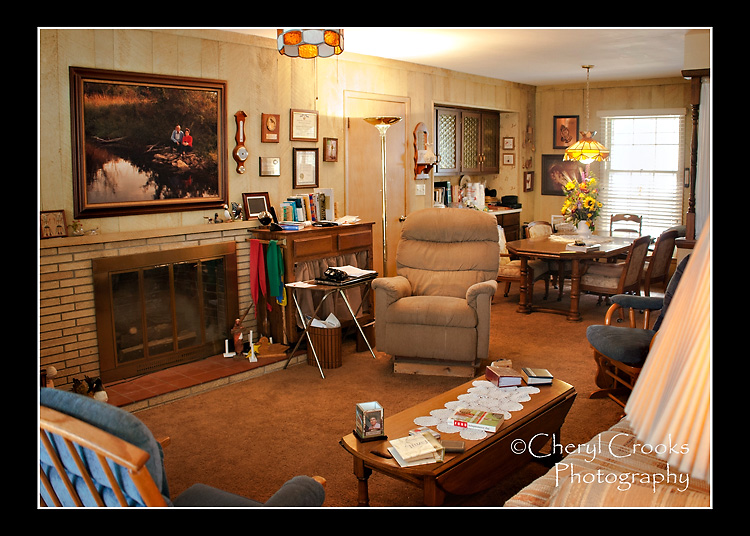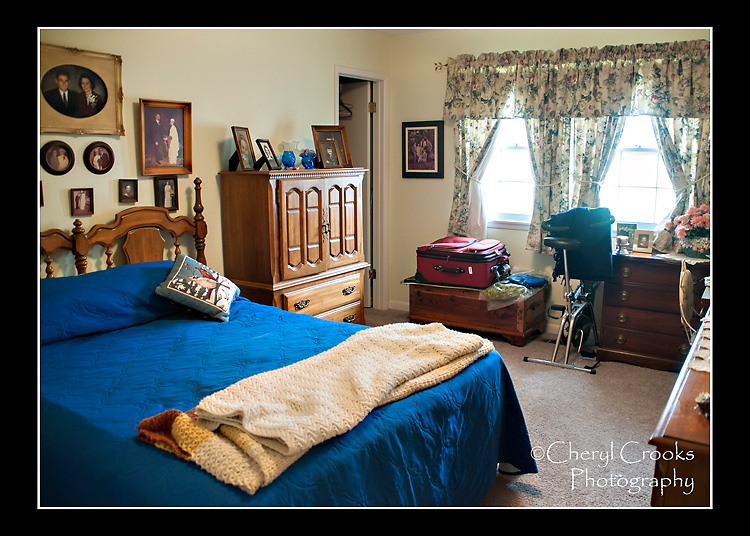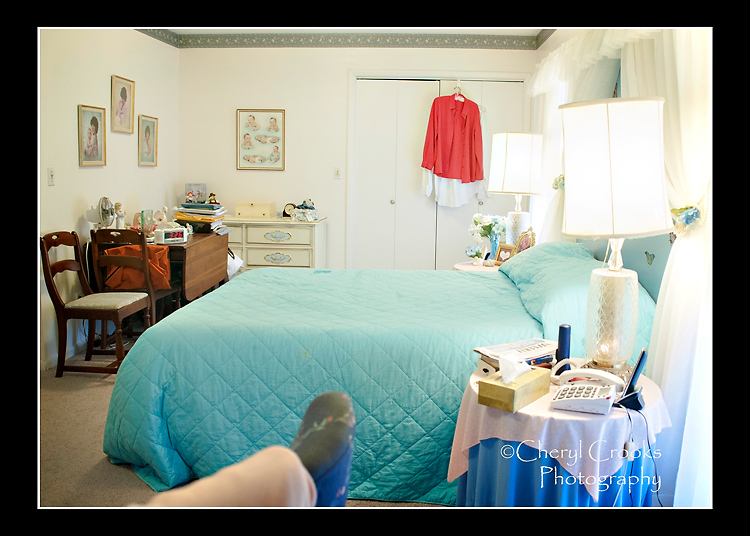I’ve moved a few times in my life. It’s not an experience I particularly love. There’s the feeling of sadness of leaving behind the old house, old friends and places so familiar that you can map them in your mind with ease. At the same time, moving brings a certain excitement because there’s a new place, new friends and new places waiting for you to discover and make your own. My oldest son is currently in this process as he moves into a new apartment and is looking forward, for now, to living without roommates and the chance to make his new place entirely reflect his own tastes and personality.
Dissembling the home of a loved one who has passed away is different. It’s something I’ve done only a couple of times in my life. This time, it was a far more intimate undertaking because the home was that of my parents. And while it wasn’t the house where I had grown up, it had been their home for nearly 45 years and was the place I came to call ‘home.’

My parents were proud of their home. They had worked hard to buy it, a newer, custom-built ranch-style home previously owned only by the people who had built it. For my mother, I”m sure it was like a dream come true. It was, by far, the nicest house she had ever lived in, my father too for that matter. They had both grown up on family farms and lived with numerous other siblings in houses that were, by today’s standards, too small for the number of occupants. Everyone shared a bedroom with three and sometimes four others. This new house had plenty of room for their family of five, plus it had lovely features like the old barn wood siding in the family room, built-in bookcases in the hall, a large, oversized master bedroom with his and her closets (not a common amenity at the time) and a full basement, a very important thing to have in tornado country.
My parents took great care in furnishing the house, purchasing new furniture over the years to fill it. They added the touches that make a home personal, placing mementos from vacations throughout the house, such as the ceramic totem pole bottle with its tiny mugs that stood on a shelf in kitchen. Or the shells gathered from the beaches of Oregon and Florida that were on the glass shelves in the guess bathroom, or the spoon collection that hung in the hall. Old wooden decorative plates that my Dad had sent home from Europe during World War II rested on the bookcase along with all the books and other knickknacks on the bookshelf.

Brad, hung above the fireplace and was the centerpiece of the family room.
But what made their home uniquely theirs were the photographs that hung in nearly every room. In the family room were wall portraits of myself and my two brothers and our families. Over the old oak desk was a grouping of individual portraits of their five grandchildren. A large canvas outdoor portrait of my Mother and Father taken by my brother, hung above the fireplace wall.
In the living room, over the piano, was the beautiful light oil portrait of my aunt playing her beloved Hammond organ. In the corner above the bookcase was an arrangement of old family pictures of my great grandparents, my parents’ respective families and more portraits of the grandkids. The bookcase top was covered with pictures of myself and my husband, my sons, my brother Richard’s family and of my other brother, Brad.

On the walls of their master bedroom were ‘composite’ oil portraits of me and my brothers taken when we were babies. One of each of our baby shoes, bronzed, hung above them. The adjacent wall had three, framed 11×14 portraits of me with each of my infant sons, portraits that my Dad had taken in my then Los Angeles home. Displayed on their bedside tables were smaller, tabletop prints of our family in both snapshots and studio portraits.
Likewise, the guest room dresser and highboy was filled with photographs of themselves in younger years, their own brothers and sisters and their families. Above the bed’s headboard were pictures from their wedding,their parents’ wedding, my own and that of my brother, Richard. My Dad’s photograph of the Bandon lighthouse was the centerpiece of another wall.

Clearly, their family was important to them both. I believe the family photographs placed on their walls and tabletops helped to keep their family close, especially since none of their children lived, for most of the time that they occupied the house, in the same town. And only a couple of their own brothers and sisters resided near by.
I was there in May to help begin the difficult and emotional process of closing my parents home. Some of the sorting had been done in the months and years prior to my Dad’s death at my Dad’s insistence, But now, came the task of emptying the house entirely. Deciding what furniture was to be sold and what pieces someone in the family would take, if it had not already been designated by my Dad. I stayed alone at night in the house. It was something I had done before when my Dad was in the hospital. But it was definitely different this time. Knowing that he would no longer be coming home. Knowing that everything on the dressers, the bookcases, the kitchen shelves, the end tables, the walls would have to go .

Starting was hard. Forty-five years of living and memories had to be sorted and dispersed one way or another. A month earlier when my Dad died, I had insisted that the photographs be left on the walls where they would be less in the way. Now, however, there could be no more delay. Things simply had to be cleared away.
One by one I began to gently lift the photographs off their nails on the wall. I folded up the easels on the framed tabletop picture and stacked them carefully in a box. It felt as if as I was erasing a part of history, my history. While it was a sad task, it was, in other ways, therapeutic. That’s because as each photo came down, the house became less and less my parents home. Those blank, barren walls, once so filled with life, were now a void. Just another wall in a house.
Certainly the memories built and contained in that house will continue to live in our minds. The photographs that made that house theirs, that said it belonged to them and only them, are now finding new places in my home, that of my brothers and other family members. And the house that was a home is again, just a house.

Beautiful, as usual. You have a way of putting into words the sentiments we all feel.
Thanks, so much, Mary. This post was particularly a personal one.
Closing a house is a task I have only done once. I wish never to do it again.
Brings bittersweet memories, doesn’t it?
Nicely done, Cheryl. Many among us are in that zone, are we not, of seeing our parents’ lives close down. Your piece gives poignant meaning to that process.